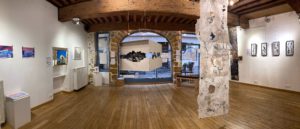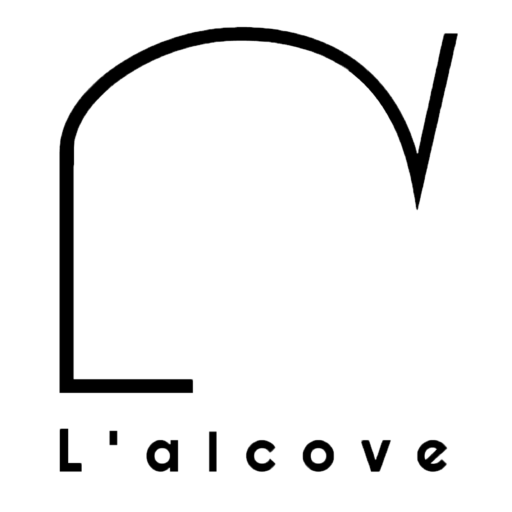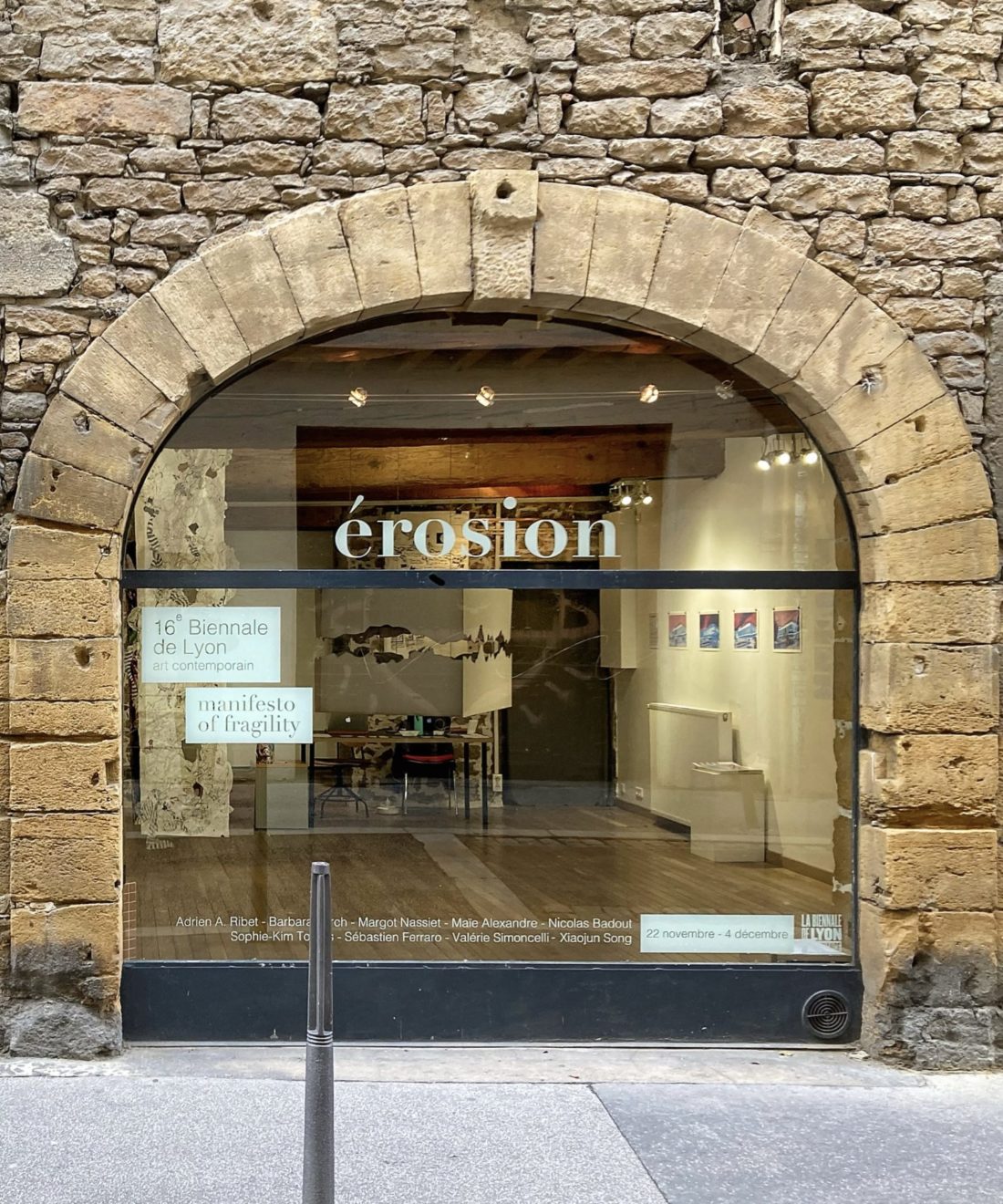Back to the collective exhibition “Erosion”
Parcours Résonance 16e Biennal Art
What does the main theme “Manifesto of Fragility” inspire you ? Why “Erosion” is the title of exhibition ?
For me, the theme “Manifesto of Fragility” evokes everything that is related to the artist’s condition and the precariety of different professions of artistic world. Whether it is all the people who work around of exhibitions or those who produce the works. The conditions of realization, notably material and financial, but also human. What I find interesting about the Alcove is that we are a collective and so that adds the fragility, especially in the issues that are created between each person.
What interested me in the theme of this year’s biennial was the relation to time. Time that creates all (or almost all) the fragility that can be found in the city. Through my reflection, I wanted to talk about the impact that time has on the city and its constructions, but also the fact that the city is left abandoned; hence the term “Erosion”.
In a few words, can you describe how you chose to represent the theme of erosion?
For my part, I decided to highlight the resources of the living. It has been known since the 1970s that nature, fauna and flora are gradually disappearing. So I made three paintings. In the first one, I wanted to talk about coral bleaching ; in the second, I wanted to denounce the disappearance of mammals and in the third the extinction of insects.
I approached the theme of fragility as a description of a non-visible state, the outer shell is not altered, but the inner is eroded, even bruised by the action of time. This fragility, due to erosion, can be both a physical and an emotional manifestation.
For my part, I dealt with the theme of erosion by questioning our relationship to time; to the fragility of our lives. For this, I worked on the Chernobyl disaster which is a very important moment in our contemporary history. A moment when we became aware of our fragility as human beings in the face of technology. As a result, to work on the theme of erosion, I produced four illustrations whose main subject is the building of the Palace of Culture in Pyriat, which I use as a sort of silent witness to illustrate a temporal triptych. Namely: before, during and after. The theme of erosion, for me, is both a way of questioning our fragility and a certain revival in some ways.
I chose to approach erosion in a temporal form, by focusing on the time left to the things around us. To illustrate this flow of time, I (based myself) on the expression “it’s hanging by a thread” which is therefore my source of inspiration for creating my works. It led me to choose a cotton thread as a creative tool to express myself on fragility which is the theme of this year’s biennial.
For my part, I have chosen to talk about erosion through the material of paper essentially. It is also about the passing of time (the time to do it too). I start with very fragile, very delicate, very transparent papers with plays of light and shadow that I will glue. And little by little, I will alter it, modify it, transform it by cutting, gluing, adding, to make this material, this paper, evolve. For the “Erosion” exhibition, I have chosen to represent this work in the form of a large roll which will be suspended, as if out of time, touching the ground. To really highlight the time that unfolds and how we dig into the material, we superimpose all the strata that also refer to the strata of the earth’s layers.
Through which medium did you choose to work on this theme?
I worked from two photos. There is a photo from 1976, so 10 years before the Chernobyl disaster, and another from 2016, so 40 years after. From these two photos I extrapolated a series of four illustrations that form a triptych: before, during, after. I did a lot of work on a graphic tablet, particularly because I wanted to render the work in risography, which is a process that is more or less similar to mechanised silk-screen printing. The rendering is a bit nebulous, a bit vaporous and a bit mechanical, reminiscent of the 1980s. I thought that this rendering was interesting to talk about erosion because the printing is not necessarily perfect or similar on all the prints.
I decided to work with baker’s cloths that are more than half a century old and torn by wear. These cloths are used to allow the bread to develop without touching each other, in a word, the bread is cocooned! I also use the idea of the Japanese art of Kintsuki which consists of repairing broken ceramics with gold powder. So I repair these canvases with gold-plated piano strings. These repairs, which make these canvases more precious, highlight the hardships suffered from birth. I wanted to draw a parallel between the bread and the infant. Both represent life, this idea came to me when I heard the story of a friend whose daughter is affected by a rare neurological disease. And like bread, sometimes infants don’t develop or develop differently.
I decided to use paper. The first work is called Belize; Belize which is a country in Central America where there is a big coral period. So, for this one, I decided to make layers of paper in which I will put coral. As I do the layers, the coral will turn white. On the paper, I work essentially with the scalpel, I cut and create fine laces of paper which inevitably make it more fragile. The more I work on my paper, the more fragile it becomes, to the point of breaking.

Exhibition “Erosion” from 22 November to 04 December 2022 at the Gallery L’Alcôve

